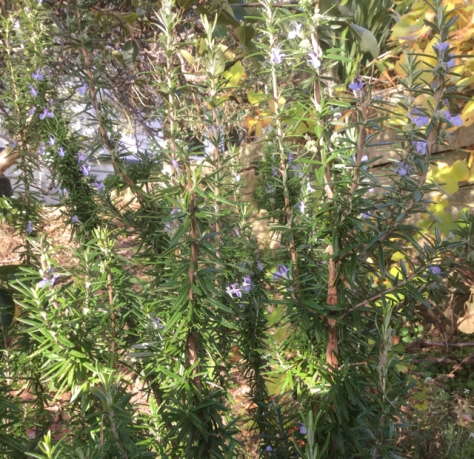
I started to grow neonic-free bee-loved plants to nourish the bees. Because there were few of them, perhaps because the city council sprayed nasty chemicals on the public zigzag outside my gate. The chemicals made me ill, so what were they doing to the bees?
So a lost two years ago I arranged with the city council that I’d care for a big area of the zigzag closest to our place, in return for No Spraying. And I planted lavender and rosemary, alyssum, phacelia, cornflowers, thyme. Nearby, the fruit trees, herbs and bushes flowered in my organic garden as they always did.
This New Zealand summer, the dandelions, calendula, parsley and borage kept right on flourishing and self-seeding in my garden and on the zigzag and I encouraged clover wherever it appeared. Would more bees flourish?
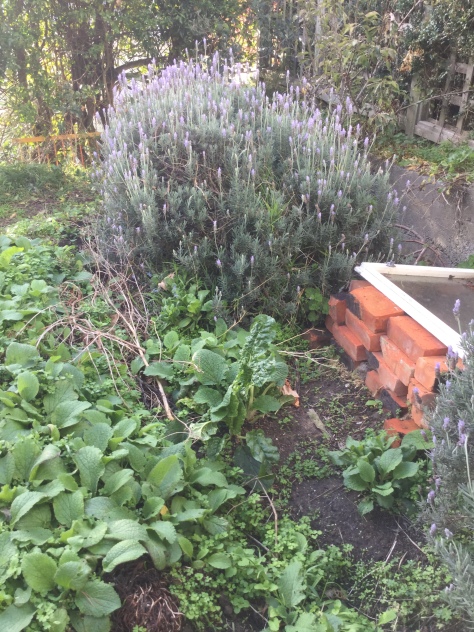
The answer, sadly, is No. At the end of this long hot New Zealand summer there were few bees, in my garden or on the zigzag. After my parsley plantation finished flowering, every so often I saw a bumble bee or honey bee on a rosemary or lavender bush in the garden, or at the edge of the zigzag path on the thyme, growing well. But none on the alyssum, now vigorously self-seeding everywhere and flourishing in spite of little rain. This autumn, still quite warm, I see about one bee a week.
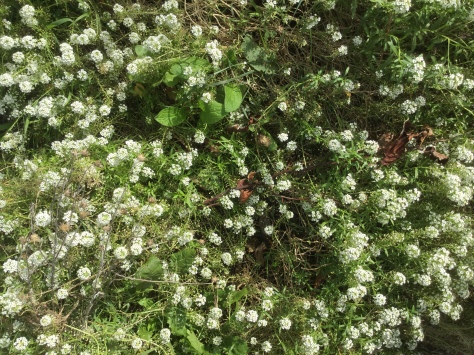
This is much worse than last year. I don’t know what more I can do.
I also asked ‘Is it possible to maintain a useful garden without water?’ Out on the zigzag, where there’s no tap, I’ve experimented with hugelkultur, raised beds above buried wood, because they’re known to be good for plants and good in drought and flood, both more common than they used to be because of climate change.
And I’ve planted vegetables and small fruits among the the zigzag’s bee-loved flowers and native plants and trees: ngaio, harakeke (flax), ti kouka (cabbage trees) and grasses.
I’ve found that in some parts of the zigzag and on some of the hugelkultur some plants flourish: tomatoes among the harakeke, bordoloi beans on a hugelkultur (but not the more common scarlet runner beans) hardy silver beet in some places but not others. On one problematic hugelkultur not even the borage and calendula bloomed strongly. There, and elsewhere in the home garden I’ve added more mulches; and Environmental Fertiliser products. Will let you know how they go!
The best news is, that like friends throughout New Zealand I have a huge quince crop, the best for decades, another result of the dry weather, I believe.
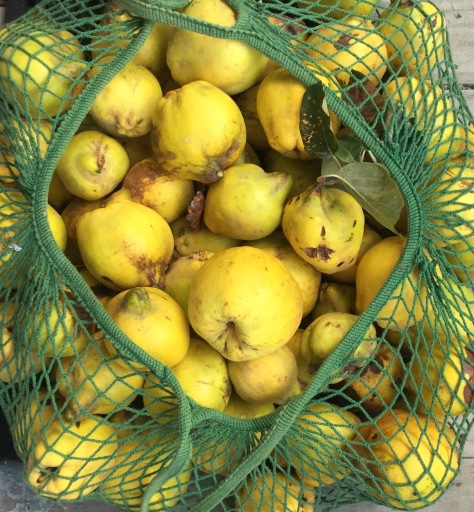
This year I’ll continue to experiment, maintaining the bee-loved focus while working hard to produce more vegetables. We’re aware of water security here because of the earthquake risk and it’s time to consider future drought risk and food security, too. (I hear passersby on the zigzag discussing these possibilities as they admire – and critique – the trees and plants.)
This week because it’s rained recently I’ll start to clear the noxious weeds, transplant some self-seeded land cress and bury the freesia bulbs I’ve been given, for their scent in the spring.
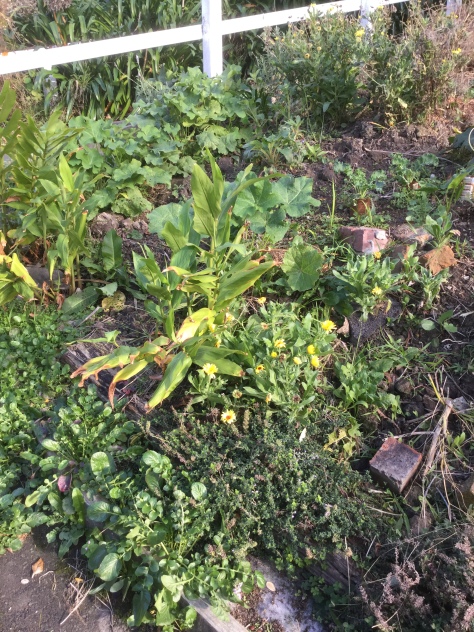
I’d love your stories and advice, if you’re engaged in similar projects. And in the meantime, off to the kitchen for the quince paste-making.






